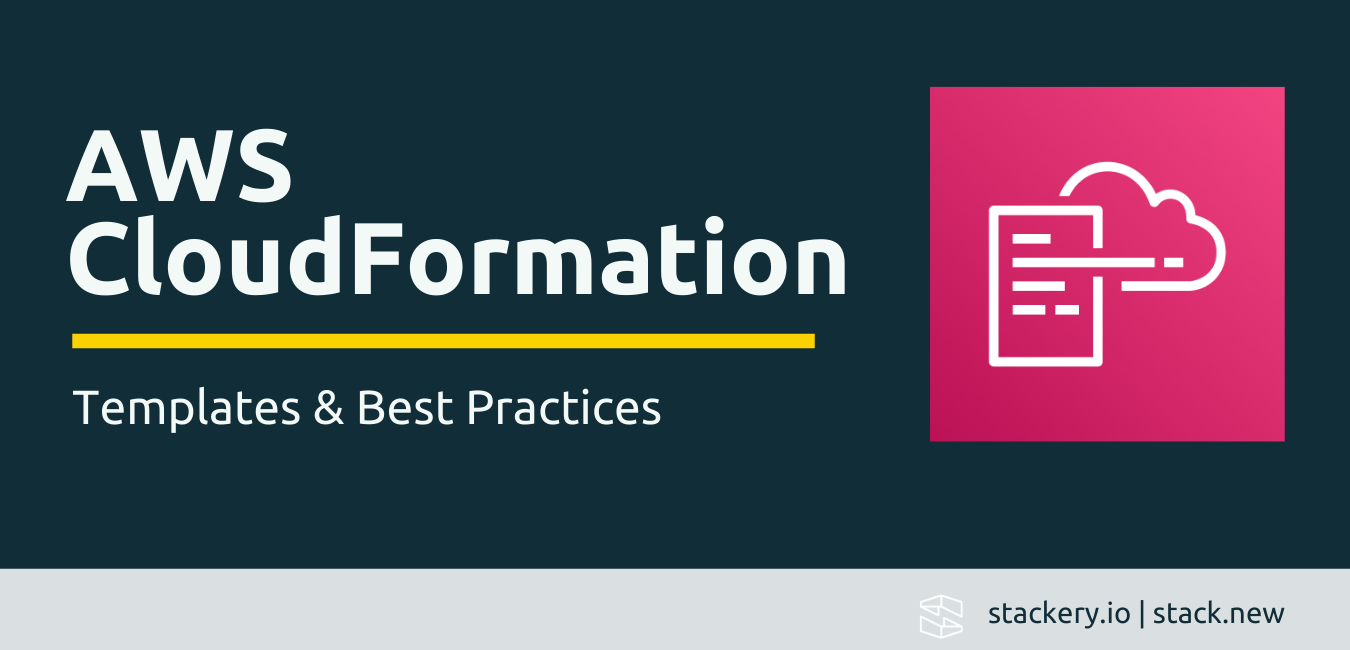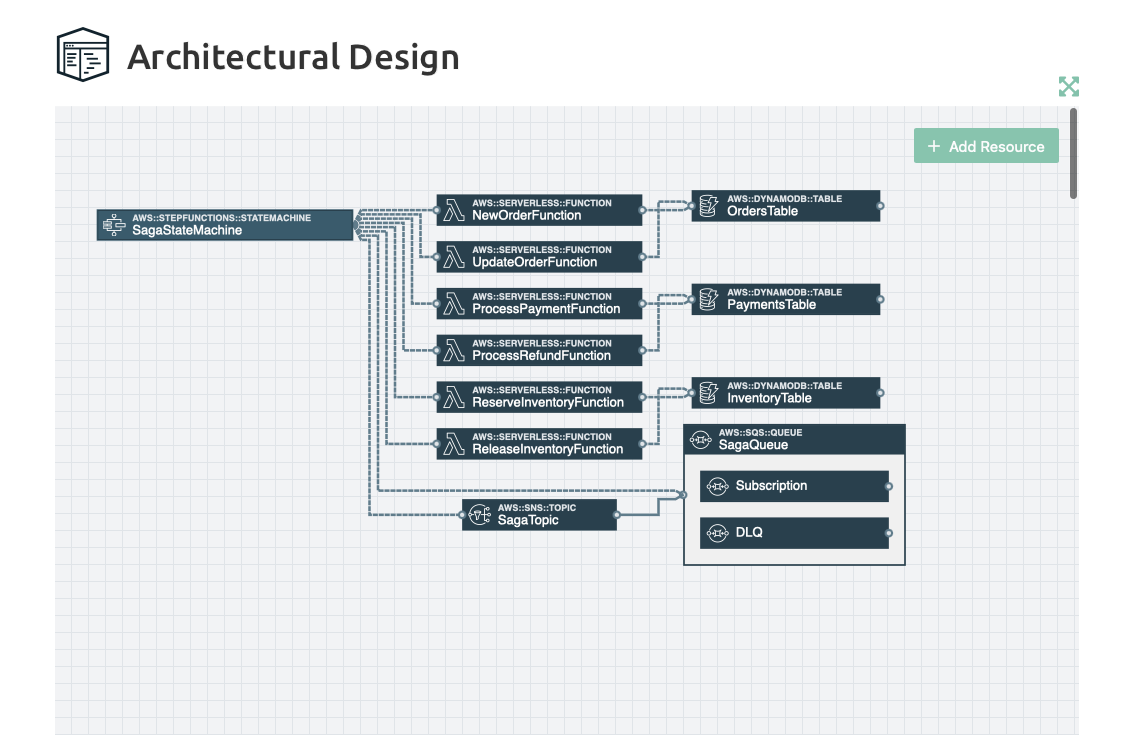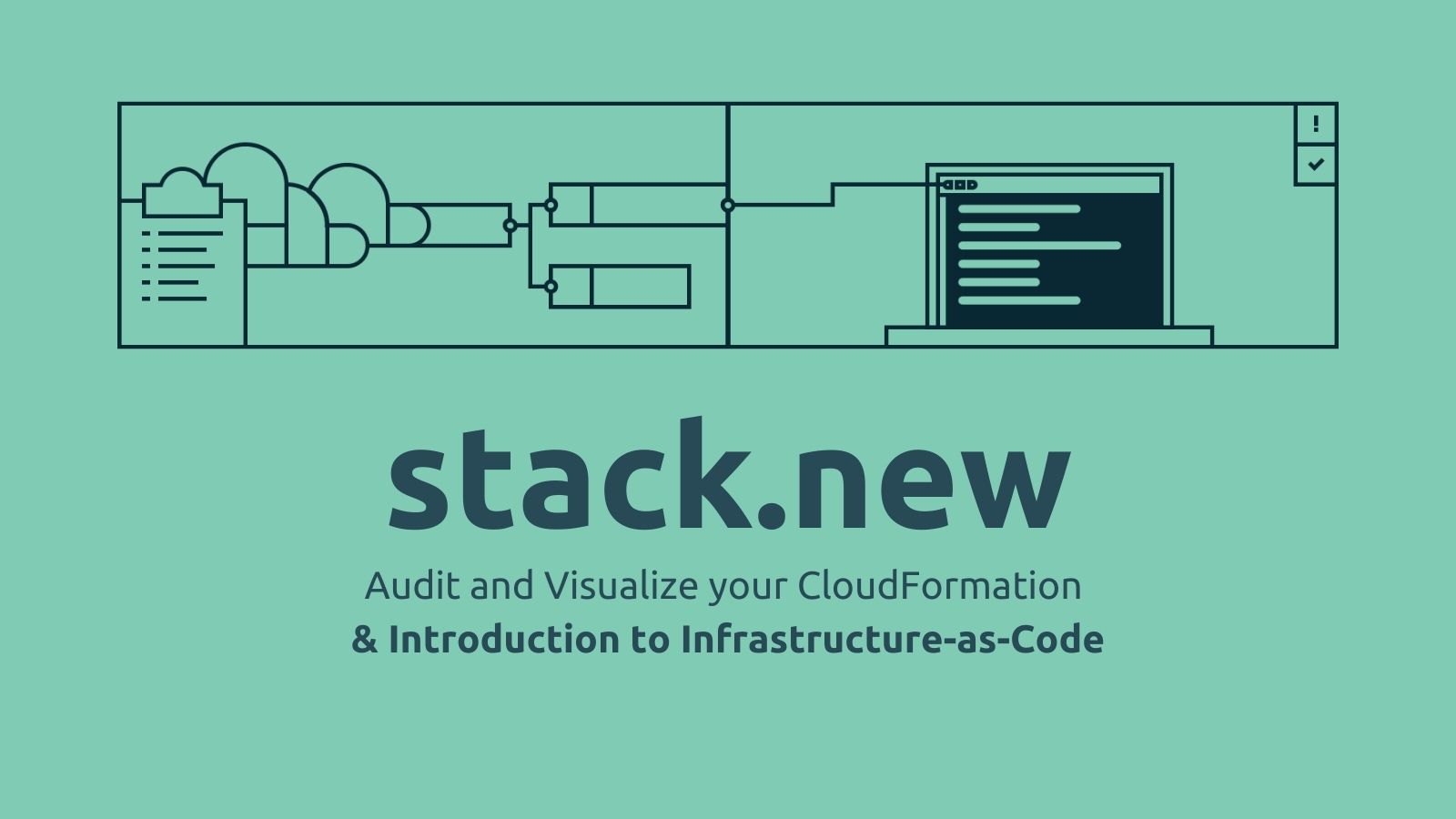Hello, Stack.new
Launching Stack.new, a CloudFormation audit and visualization tool

I’ve learned a lot about serverless in my first full year at Stackery after joining from the Ops-focused automation company, Puppet. I’ve learned how to deploy rich CMS-backed web applications in a serverless way, how to cast incantations using CloudFormation’s intrinsic functions, but most of all I’ve learned that there’s a lot to learn in order to be successful in AWS.
Serverless lets you own less, build more
Fundamentally, serverless is an approach that abstracts the amount of infrastructure you are responsible for so that you can focus your energy where the business needs it most. Forrest Brazeal frames it as “own less, build more” and if you remain unconvinced at how serverless can empower you, I encourage you to watch his short pitch.
In my view, serverless is the next wave of empowerment for software engineers and operations professionals on the scale of what configuration management enabled for VM-based application infrastructure. But, it’s not automatic. There’s a lot to learn, a lot of Infrastructure-as-Code to write and maintain, plus a new workflow paradigms.
These challenges are why Stackery built its serverless platform and why we built stack.new, a public tool for visualizing and auditing any AWS CloudFormation or AWS SAM Infrastructure-as-Code template.
But there’s still a lot to learn and apply to operate applications in public cloud
Consider the 5 Pillars of the AWS Well-Architected Framework and their associated design principles.
- Operational Excellence
- Security
- Reliability
- Performance Efficiency
- Cost Optimization
Some design principles under these pillars are abstract and human-oriented, like mechanical sympathy or where you should spend your money. But most of them are practices that show up in your development or operational workflows, how you configure your cloud infrastructure, or the shape of your cloud architectures.
That’s a good news / bad news situation. On one hand, it’s wonderful that so many practices that make for a strong cloud environment can be expressed in code and repeatedly applied to any environment. On the other hand, it’s work that every team is doing as a one-off task for every set of infrastructure they operate.
Reusable AWS CloudFormation content
Instead of learning and applying each practice for every stack, what if you could find patterns for your intended workload that applied best practices across every category?
The intent is to flatten the learning curve to something manageable while reducing errors and oversights.
We’re working to enable this with the launch of stack.new. Stack.new organizes, explains, and visualizes AWS CloudFormation & AWS SAM Infrastructure-as-Code templates. We’re striving to build as many automated checks as we can against the Well-Architected Framework. Stack.new collects relevant learning material from across the web to help anyone improve shared templates for collective benefit.
Audits & resources
For example, we audit AWS IAM policies for tight-scoping between resources and we'll soon publish a guide to help you improve your AWS IAM policies.
CloudFormation Visualization and Low-Code Editor
Stack.new uses Stackery's patented Design Canvas to visualize your CloudFormation template. You can click into any resource to see its configuration and drag-and-drop new resources.
Our immediate goal is a collection of sample templates that cover most architectural patterns, apply best practices, and serve as a launch pad for your business application. Beyond that, we would like to help you with your private templates and achieve truly modular and composable templates in public.
How does it work?
Visit https://stack.new and share a link to a publicly accessible GitHub CloudFormation template. Within seconds we’ll generate a page that includes architecture visualization, extracted documentation, and audit checks with links to relevant learning guides, which we've found or have been shared with us, that might help improve the template.
Browse what’s already been shared
You’ll find many templates already linked to on the submission form, or related to your stack. We’re interested in categorizing shared templates to provide a browsing interface and would love your feedback on how you’d want to find templates for your needs.
What do you think?
https://stack.new is just getting started as a preview and we’re excited about what we’re working on next. But, we’d much rather hear from you. Let us know what you consider when deploying a CloudFormation template and we’ll get to work.
Related posts

Truly composable and maintainable CloudFormation is now within reach


